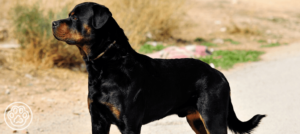Advertisements
The grown-up dog breeds are characterized by majesty and grandeur. As a private guard dog situation, almost all large dog breeds are suitable for protection, day-to-day loyalty, and timeliness for dogs to use when they are raised. Dogs, there are a few to consider. Find out how big dogs enrich their owners’ lives and what they demand from their predecessors in our expert guide.
When Are Dogs Considered Big?
Dogs are considered large if their height exceeds 60 cm. Size indications are the average height at the withers as stated in the breeding standard. This is the measurement from the floor to the highest point of the shoulder blades. There is sometimes great variation among individual large breeds in height at withers. While Boxers at the withers can be anywhere from 56 to 64 cm, the largest breed, the Irish Wolfhound, can reach 90 cm at the withers or more. However, in terms of weight, the Mastiff is considered the largest dog breed. Compared with the mastiff, which weighs one hundred kilograms, the Irish wolfhound weighs only about half of it.
Characteristics of Large Dog Breeds
Each large dog breed has very unique characteristics. The most important factor in their development is the type of work the dog was originally bred for. However, the following generally applies to large breeds: They have extremely loyal, very loving and confident personalities.
While many large dog breeds have pronounced guarding and protective instincts, some are very sensitive and calm, and thus only partially suited to bravely defend homes and families. If you’re planning to get a large dog, you should do in-depth research on the individual characteristics of a particular breed of dog.
Advantages of Large Breeds
Choosing a large dog breed is largely a matter of personal preference. Owners of large dogs value their four-legged friends not only for their strength of character, but also for their commanding appearance. This alone makes large breeds more of a deterrent to would-be attackers or burglars. If you want a companion to protect you, your family, your home and possessions, a large dog breed such as a German Shepherd, Doberman Pinscher, Giant Schnauzer or Hovawart is generally recommended. Athletic people are usually better suited to large dogs than small dogs. If you want to go for long, long runs in nature, bike rides, or other outdoor sports, a larger breed like a Rhodesian Ridgeback or Dalmatian will be better able to keep up with your pace. However, you should learn more about the breed of your choice in terms of agility before making a purchase. While many large dogs are very durable, other large dogs have musculoskeletal systems that are not well suited for long-distance running due to their constitution.
Are large dog breeds suitable for families with children?
There is no general answer to this question, although the basic characteristics of large dog breeds clearly show favor in keeping them in a family. Many large dog breeds are known to be very fond of children, patient and gentle. Large dogs are also stronger than some smaller dogs and therefore less susceptible to being roughed up by children. At the same time, however, they tend to be impulsive and in some cases clumsy. Small children are at increased risk of injury when playing with large dogs. Therefore, smaller breeds are a better choice for families with young children. In our guide to small dog breeds, we introduce you to some exceptional family and child-friendly four-legged friends who are lively, robust,
Older children and their parents will appreciate larger breeds that are family friendly, such as Boxers, Golden Retrievers or Airedale Terriers, but are in any case ideal companions for active and varied leisure activities.
Are there any special requirements for large breeds?
In order for you to live in harmony with large dogs, you must consider many aspects before buying. Large dog breeds are especially demanding to train. A large dog that is not adequately socialized and trained can cause major problems in everyday life for its owner and those around it.
While this also applies to small breeds, they are easier to control due to their small size. Additionally, small dogs with behavioral problems were seen as less of a danger by neighbors or passers-by than larger dogs. Many large dog breeds often develop joint problems as they age due to weight gain. Therefore, in the first few years of life, they should climb stairs as little as possible. Keep this in mind if you live on the third floor or if your house has multiple floors. Larger dog breeds generally have a stronger urge to move than smaller dogs and are therefore better suited to a house with a garden. With enough exercise, it’s not impossible to keep them in an apartment, but large dogs usually need a lot of space.
How Much Exercise Do Large Dogs Need?
Dogs must exercise! If they don’t, they can become dissatisfied to the point of unhappy, even aggressive. When a dog breed is released, a variety of factors play a role:
- age. Regardless of breed or size, dogs age and therefore become dull. This has an effect on the leg muscles that dogs lose with age. When they are young, dogs need more movement and exercise because they are full of energy and have an urge to explore.
- dog breed. Breeds like the Siberian Husky need two to three hours of daily exercise and are underutilized after that. As such, they are 50-60 cm in size and are a large dog breed that needs a lot of exercise. Chow Chows, on the other hand, are rather sluggish and don’t want to exercise much. Like the husky, it grows to a height of 50-60 cm. From the dog’s personality and energy, you can estimate how much the dog needs to consume.
So before you buy a dog, figure out if you can find the time and school, hobby or job you need.
Restrictions Associated With Large Breeds
In air travel, large dogs can only be transported in the cargo hold, which can put a lot of stress on the animals. Large dogs take up a lot of space in a car and hardly fit in a small car. Due to its size, carrying it to restaurants and public facilities is complicated, if not impossible. Finding suitable accommodation can also be difficult when traveling with a large dog, as many hoteliers and vacation rental owners only allow small pets. Also, before you buy, keep in mind that large dogs have a shorter life expectancy than most small dogs. This aspect is especially important from an emotional point of view. Before buying, also consider whether you can carry your four-legged friend if he becomes ill or immobile due to old age. You can easily lift and carry a puppy by yourself. On the other hand, with a weight of 50 kg, at least two people are needed.
Are large dogs more expensive than small dogs?
Yes, in some areas, large breeds cost significantly more than small breeds. You need more feed, and the basic equipment (dog basket) is also associated with a higher cost for the larger version. If you own a large dog, you also have to take into account the fact that many of the daily activities come with additional costs or restrictions.
Life expectancy for large dog breeds
Unfortunately, large breeds usually die earlier than smaller breeds. But why? According to research, this is because large dog breeds age faster than small breeds. In addition, the muscles and joints of large dogs are under more stress because they weigh more than small dogs. As they age, they become sluggish and can only move with difficulty. Small dogs, on the other hand, are more agile and still very active when they are older. It also depends on whether your dog is a purebred or a mixed breed. Mixed breeds always live longer than purebred dogs. Besides nutrition, the environment you provide your animals is also important. Rural dogs generally live longer than urban dogs. On the other hand, the sex of the animal does not matter because whether it is female or male,
When Are Large Dogs Fully Grown?
When a dog grows up, it depends on the breed of the dog. For example, small dogs mature faster than large dogs. The average lifespan for all dog breeds is 12 months. However, for large breeds it can also be as long as 18 months. By the time a dog is 18 months old, it usually has reached its ideal weight and maximum height. That weight is then held in the owner’s hands.
How old are large dogs?
The average age of a large dog is ten to twelve years old. It can even be as short as eight to ten years for particularly large breeds. Almost everyone knows the age-old rule of thumb that one dog year equals seven human years. However, this theory is outdated because small dogs can live up to 18 years, and they would theoretically be 126 human years old.
Disease Susceptibility in Large Dogs
Large dog breeds really don’t age easily in life. They are often afflicted by disease compared to their smaller counterparts. Large dogs may develop conditions such as panosteitis (inflammation of the skin over the bone) or osteosarcoma (bone tumor, “cancer”), and you should see your veterinarian immediately. In general, dogs tend to hide their pain, which makes it difficult for owners to diagnose ailments. With panosteitis, the dog does not want to signal pain. However, they become more sluggish, with pain in the bones and joints. Often this also results in them lying on the ground during the run. So if you notice any mild signs of lethargy, it’s best to see a veterinarian so your dog doesn’t experience any pain.
Another disease often diagnosed in large breeds is osteosarcoma, also known as canine cancer. This disease requires immediate action. A dog’s affected limb may require amputation to prevent the cancer from spreading throughout the body. Despite the amputation, your dog can go on to live a happy life. Large breeds are at high risk of twisting, especially deep chested breeds. Gastric volvulus is a 180 degree rotation of the stomach. This can be a case of frantic and wild exercise, and often happens after the dog has eaten. The stomach distends rapidly and the dog’s blood circulation is severely impaired. This is a true emergency which, if left untreated, will result in the death of the animal,
Large dogs – loyal and active companions in everyday life
Do you love the outdoors in your relationship? Do they want to get up close and personal with your pet? Because they are willing to consider your needs when they are active? Then Big Dog is the perfect companion for you. With talent and a love of sport, the protagonist of the remarkable breed, the Great Breed turns into a constant adventure.
Advertisements





